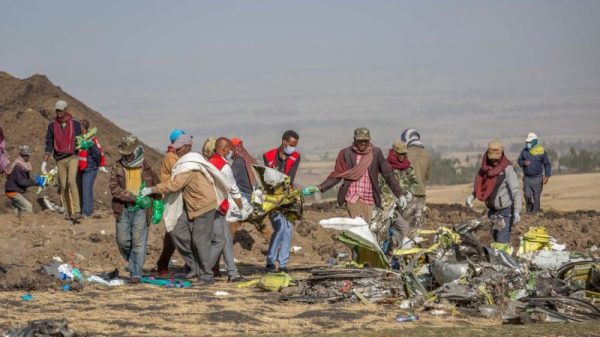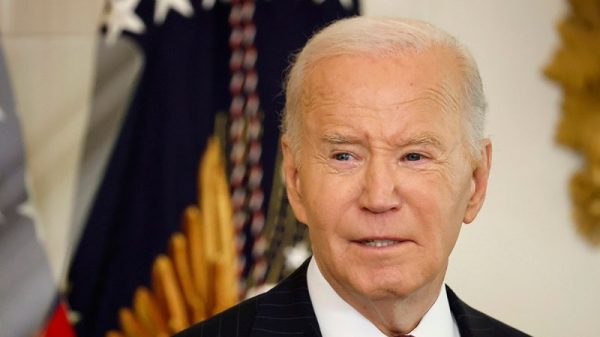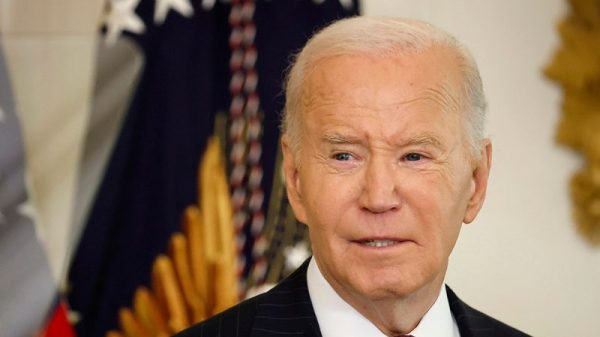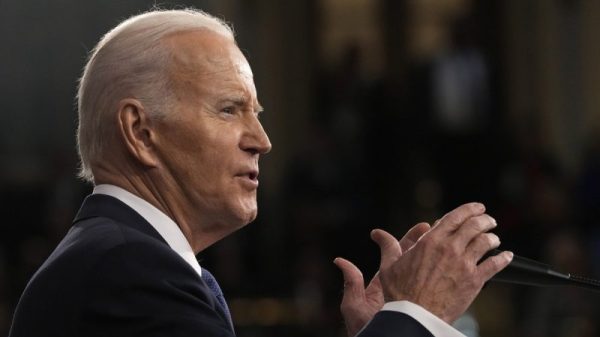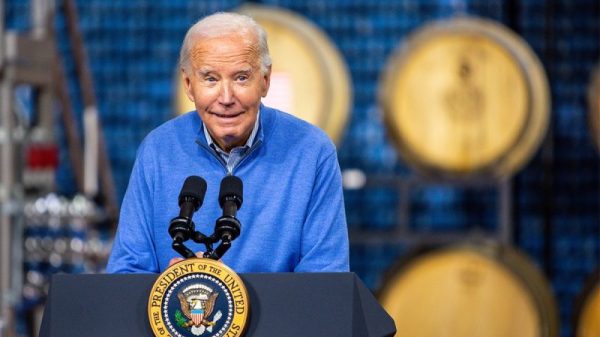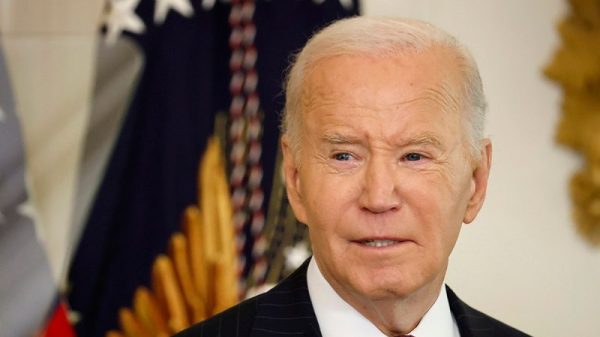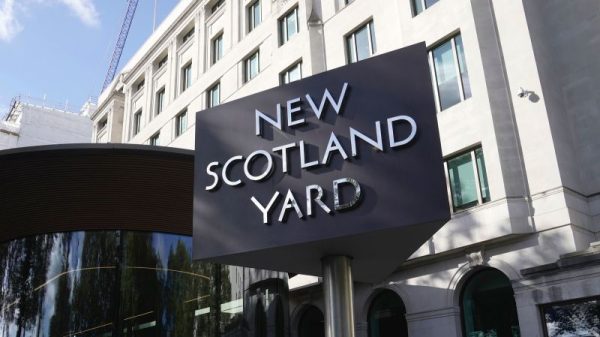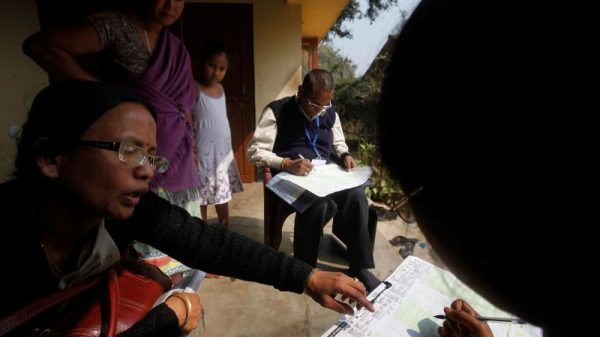After nearly a year of fighting in Gaza, Israel is ramping up hostilities with Hezbollah in Lebanon, with covert operations targeting communications devices and a ferocious bombing campaign that has left hundreds dead.
The fight against Hamas has strained the Israeli military, with soldiers receiving little respite, officials citing army shortages, the economy facing its steepest decline in years, and growing public pressure for a ceasefire and a hostage deal.
It is unclear whether Israel intends – or will feel compelled – to launch a ground invasion into Lebanon. But the question looms: Can the country take on a second front?
Since October 8, the day after Hamas’ deadly attack on Israel, there has been regular cross-border fire between Hezbollah and the Israeli military. Hezbollah first fired at Israel to protest the war in Gaza, demanding a ceasefire there as a condition to end its attacks.
The stakes were raised last week when Israel injured thousands of people across Lebanon, detonating pagers and walkie-talkies used by Hezbollah. Escalating exchanges of fire have followed.
Should Israel enter full-scale war with Hezbollah, experts say it will face a much stronger threat than Hamas – and commensurate costs.
Over the weekend, the group launched one of its deepest strikes into Israel, with the Israeli military reporting impacts in Kiryat Bialik, Tsur Shalom and Moreshet near the port city of Haifa, around 40 km (25 miles) south of the border.
The cross-border exchange over the past year has already led to more than 62,000 residents being evacuated from their homes in Israel’s north, and the deaths of 26 Israeli civilians and 22 soldiers and reservists, according to Israeli media. Ahead of the weekend’s escalation, over 94,000 had been displaced and more than 740 killed on the Lebanese side, including some 500 Hezbollah fighters, according to Reuters. Israeli strikes since Monday alone have killed at least another 558 people and led to the displacement of 16,500, according to Lebanese authorities.
Here are some of Israel’s main challenges in a potential wider conflict with Hezbollah:
A stronger enemy
Iran’s closest regional partner, the Shiite Islamist group has not only showcased more sophisticated weaponry over the past year, but it also boasts strategic depth through its allies and partners across the Middle East – including in Iraq and Yemen.
While Israel’s military capabilities have improved since its last war in Lebanon in 2006 – when the Jewish state did not yet have its Iron Dome defense system – so has Hezbollah’s arsenal.
Military analysts estimate Hezbollah to have between 30,000 and 50,000 troops, but earlier this year its leader Hassan Nasrallah claimed it has more than 100,000 fighters and reservists. The group is also believed to possess between 120,000 and 200,000 rockets and missiles.
Its biggest military asset is the long-range ballistic missile, of which it is estimated to have thousands, including 1,500 precision missiles with ranges of 250–300 kilometers (155–186 miles).
During the weekend attack, Hezbollah said it targeted Israel’s Ramat David airbase with Fadi 1 and Fadi 2 missiles, longer-range weapons that are believed to have been used for the first time. The base is some 30 miles from the Lebanese border.
The Israeli military did not respond to queries about whether the base was impacted. Israeli emergency services reported that three people were wounded in the attacks.
Behnam Ben Taleblu, a senior fellow at the Foundation for Defense of Democracies (FDD) think tank in Washington DC who focuses on Iran and its proxies, said that the “warhead weight of these projectiles is reminiscent of the heavy Burkan IRAM (improved rocket assisted munition) first introduced last winter against Israel by Hezbollah, but at considerably longer range.”
Orna Mizrahi, a Hezbollah expert at INSS said that much of Israel’s ability to fight a two-front war rests on US support.
“The IDF (Israel Defense Forces) can fight both fronts for a long time, and we have the capabilities to do it if we have the ammunition from the Americans,” Mizrahi said, adding that if there is a full-scale war, the US will likely intervene to support Israel.
Israel also has a huge intelligence advantage, most notably seen in last week’s audacious attacks on Hezbollah’s communications.
Stretched military
Israel is a small state and its military manpower is not limitless. As it gears up for a possible second war, the IDF is diverting some of its key divisions from Gaza to its northern border.
“When you are fighting more than one front, you cannot invest too much in every front,” Mizrahi said. “So it will be a different way of fighting.”
Israeli Defense Minister Yoav Gallant last week said that “the center of gravity is moving north,” and that “forces, resources, energy” are now being moved.
Among those units is Israel’s elite 98th Division. Also known as Utzbat HaEsh, this paratrooper division is believed to consist of 10,000 to 20,000 troops, according to Israeli media.
Guzansky said that diverting resources toward Lebanon does not mean the Gaza war is over, but that Netanyahu feels compelled to deal with the northern front amid mounting domestic pressure to facilitate the return of evacuees from the area.
Analysts and army officials cited in Israeli media have also repeatedly said the IDF is suffering from shortages.
At the outset of the war with Hamas, the military recruited about 295,000 reservists in an effort to boost its manpower. But that number is proving insufficient.
The fighting in Gaza and elsewhere has also taken its toll on soldiers, of whom 715 have so far been killed since October 7, including in the north.
“This is the longest (war) of its kind in Israel’s history, longer than the War of Independence in 1948,” Guzansky said, adding that this is Hezbollah and Iran’s goal, “to weaken Israel gradually.”
“To fire rockets every day, on a low scale, and to occupy the IDF, to overstretch the IDF,” he said.
An economy in decline
Israel’s economy has been one of the biggest casualties of the war in Gaza, taking a sharp blow from the early days of the October 7 attack. Thousands of businesses suffered as reservists abandoned their civilian lives to take up arms, and the country’s economy is shrinking at an alarming rate.
“It’s devastating on the Israeli economy, on Israeli society,” Guzansky said, adding that the impacts will live on for years to come.
Of all 38 nations in the Organization for Economic Cooperation and Development (OECD), Israel showed the sharpest economic slowdown between April and June of this year, the organization said in its quarterly report.
According to OECD data, Israel’s economy shrank by 4.1% in the early months of the war, and continued to contract, albeit at a slower rate, throughout the first and second quarters of 2024.
The contracting economy comes as Israel’s military spending skyrockets. Earlier this year, Amir Yaron, the governor of Israel’s central bank, warned that the war is expected to cost Israel up to 253 billion Israeli shekels ($67 billion) between 2023 and 2025, Israeli media reported. That’s almost 13% of Israel’s GDP, in addition to regular military expenditure, which has stood at an annual 4.5% to 6.5% of GDP, according to World Bank data.
An expansion of the conflict has also impacted Israel’s credit rating, making it more expensive to take on debt, with multiple rating agencies downgrading the country since the war began.
In a statement last month, credit ratings agency Moody’s warned that an all-out war with Hezbollah or Iran could have significant “credit consequences for Israeli debt issuers.”
A legitimacy crisis
A second front, especially one that could be far more damaging to Lebanon than to Israel, could be the final straw for many countries already critical of Israel’s war in Gaza, experts said.
The global sympathy that Israel received in the immediate aftermath of the October 7 attack has turned into sharp criticism due to Israel’s devastating reaction, as it now faces accusations of war crimes and genocide in international courts, which it strongly denies.
Domestically, while Israelis showed a greater appetite for fighting at the outset of the Gaza war, polls show that domestic support has waned over the last months.
On support for a war with Hezbollah, Israelis appear split on the matter.
A survey published by the Israel Democracy Institute think tank in July found that 42% of Israelis think their country should pursue a diplomatic agreement with Hezbollah, despite the chances of an additional conflict in the future, while 38% think Israel should pursue a military victory against the group, even at the cost of significant damage to civilian areas.
Despite the split in opinion, there is now less support for war with Hezbollah compared to responses in late 2023, the poll said.
Guzansky said that pressure for war is likely more palpable in northern Israel, where “people that don’t have businesses anymore, families (are) broken apart… people (are) being killed.”
Many of these residents, who have lived close to the frontline for nearly a year, believe that “only a full-scale war can change the reality in the north,” he added.





